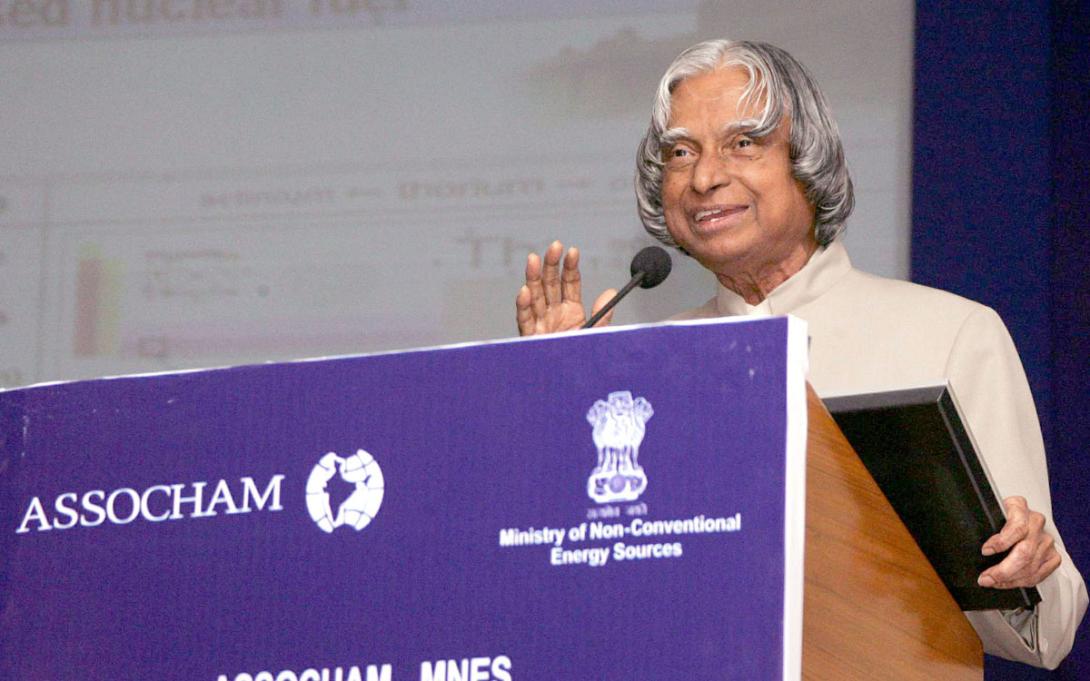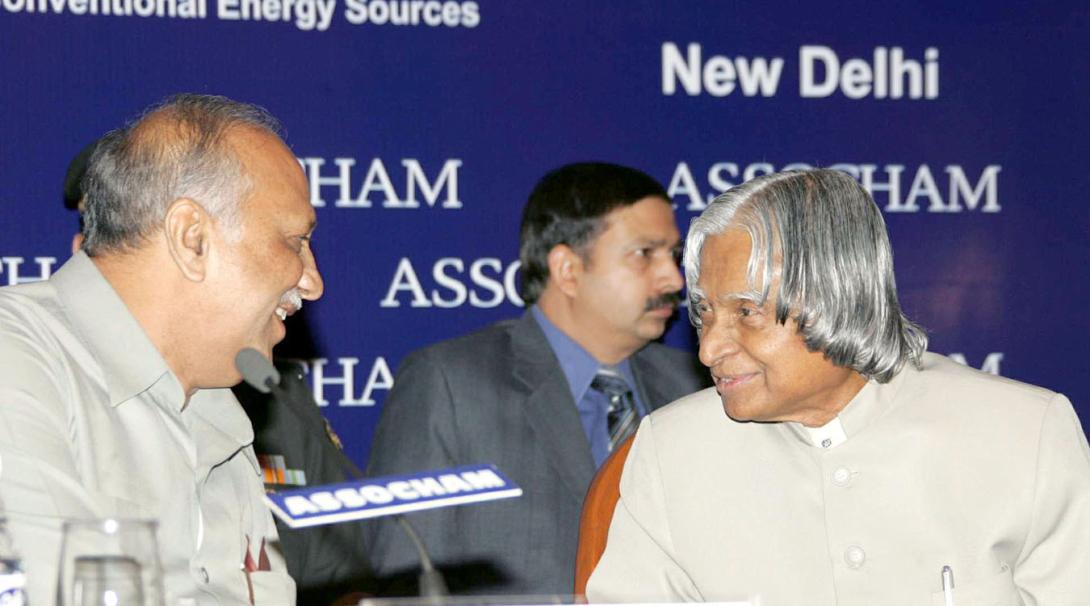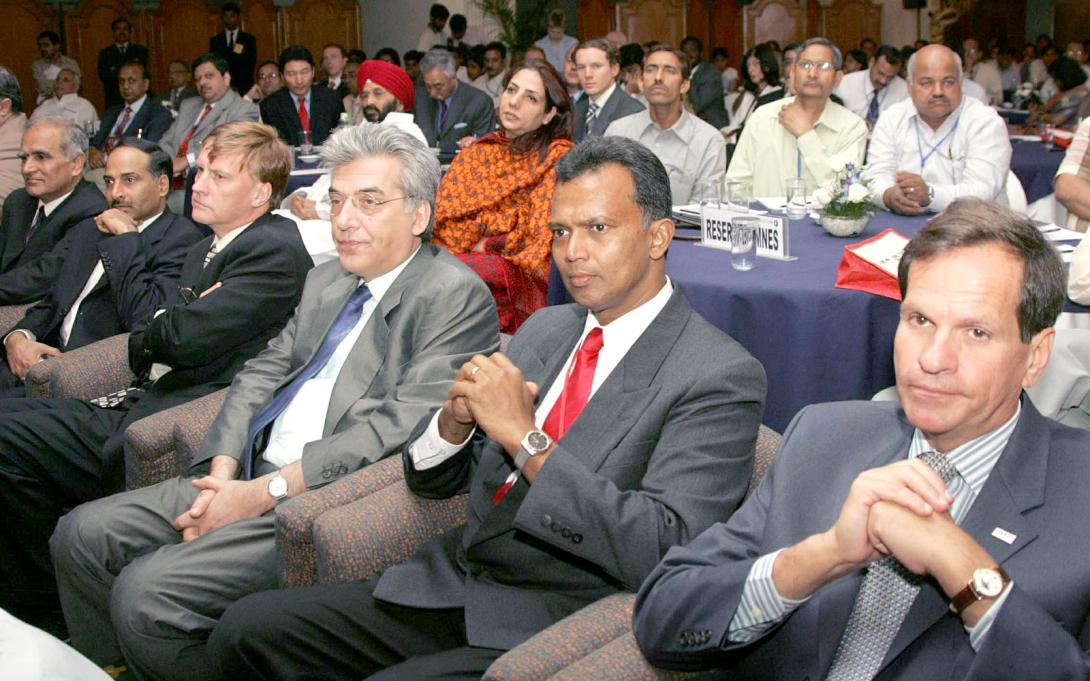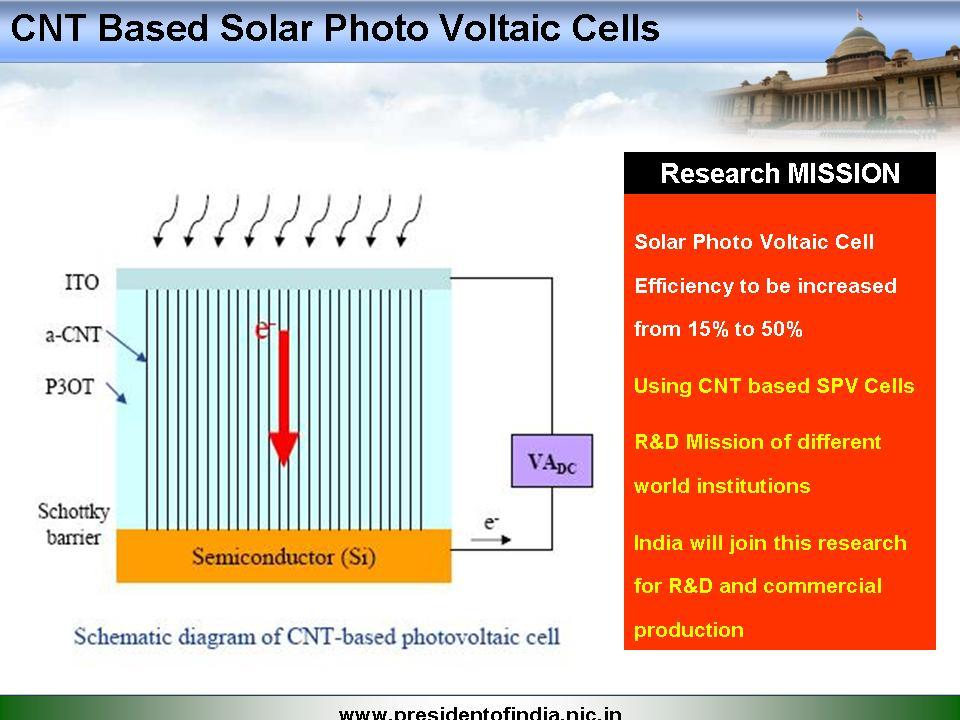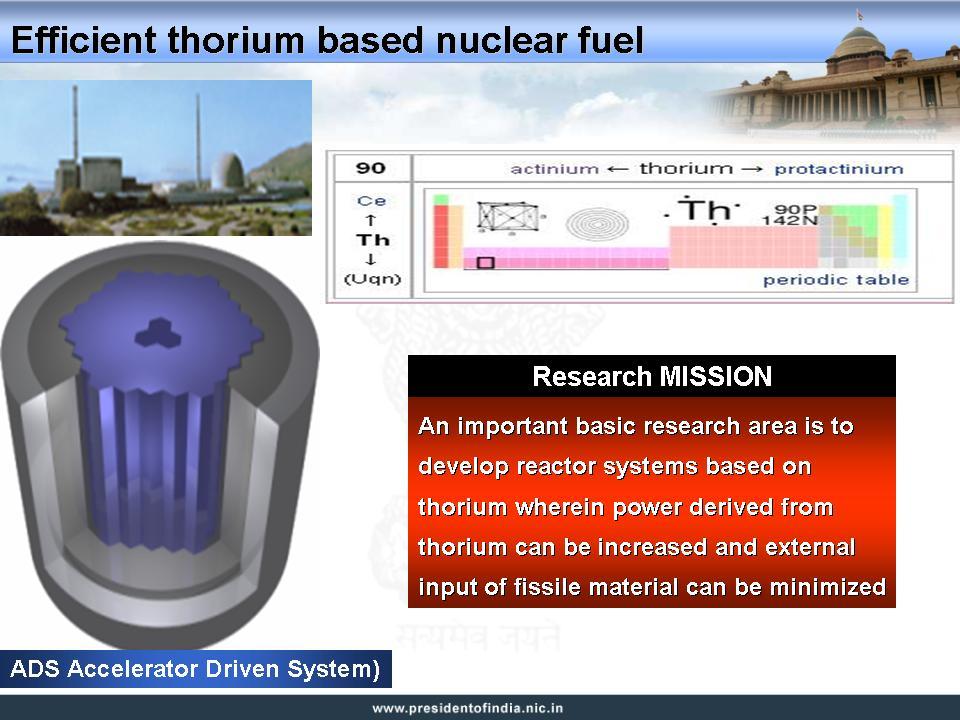Address At The Inauguration Of The South Asian Conference On Renewable Energy, New Delhi
New Delhi : 18-04-2006
Energy Independence
" Energy Independence
is the lifeline of a nation"
I am delighted to participate in the inauguration of the South Asian Conference on Renewable Energy organized by the Ministry of Non-conventional Energy Sources in partnership with the Associated Chamber of Commerce and Industry of India (ASSOCHAM). My greetings to the organizers, energy experts, energy planners, academicians and the distinguished guests participating in this conference. I particularly greet the energy specialists from SAARC countries, Myanmar, Thailand, China and Mauritius and the invited speakers from Europe and USA.
Energy Independence
The era of wood is almost nearing its end. The world energy forum has predicted that fossil based oil, coal and gas reserves will last for less than ten decades. The unpredictable increase in the cost of oil continuously prompted me the study the energy scene. Based on the study I have discussed about Energy Independence as part of my Independence Day Address to the nation, on 15 August 2005. There I mentioned that Energy Independence has to be our nation?s first and highest priority. Our target is to achieve Energy Security by 2020 leading to Energy Independence by 2030 and beyond. This study may be useful to the participating countries of the South Asia Conference on Renewable Energy. Hence, I would like to present the actions suggested to be taken in the generation of renewable energy for realizing energy independence in India as a case study.
Structure of Energy Sources
For meeting the development targets of India our power generating capacity has to increase to 400,000 MGW by 2030 from the existing hundred and thirty thousand Megawatts of power. This has got to be achieved through three different sources namely hydel capacity, nuclear power and non-conventional energy sources primarily through solar energy. The hydel capacity generated through inter-linking of rivers is expected to contribute additional 50,000 megawatts of power. Large scale solar energy farms of 100?s of megawatts capacity in certain number could contribute around 55,000 MW. The nuclear power plants should have a target of 50,000 MW of power. The balance has to be generated through the conventional thermal plants through coal and gas and other renewable sources of energy such as Wind power, Biomass, power through municipal waste and solar thermal power.
The strategic goals for Energy Independence by 2030 would call for a shift in the structure of energy sources. Firstly, fossil fuel imports need to be minimized and secure access to be ensured. Maximum hydro and nuclear power potential should be utilized, apart from the use of coal and gas based thermal power generation. The most significant aspect, however would be that the power generated through renewable energy technologies has to be increased to 25% against the present 5%. It would be evident that for true Energy Independence, a major shift in the structure of energy sources from fossil to renewable energy sources is mandated. I have given an energy independence mission to my country. Also, I would like to share with you my thoughts on how certain areas of both conventional and non-conventional energy can be structured together to meet our national development needs. Let me discuss about the profile of renewable energy systems. Firstly I would like to talk to you on Solar Energy.
Solar Energy
Solar energy in particular requires unique, massive applications in the agricultural sector, where farmers need electricity exclusively in the daytime. This could be the primary demand driver for solar energy. Our farmers demand for electric power today is significantly high to make solar energy economical in large scale. Shortages of water, both for drinking and farming operations, can be met by large scale seawater desalination and pumping inland using solar energy, supplemented by bio-fuels wherever necessary.
We also need to embark on a programme in solar energy systems and technologies, for both large, centralized applications as well as small, decentralized requirements concurrently, for applications in both rural and urban areas.
CNT based solar cells for higher efficiency: One of the important need for achieving energy independence by 2030 is to increase the power generated through renewable energy sources from the existing 5% to 25%. Particularly, the energy produced through solar energy has to increase substantially. The low efficiency of conventional photo voltaic cells has restricted the use of solar cells for large application for power generation. Research has shown that the Gallium Arsenide (GaAs) based PV cell with multi junction device could give maximum efficiency of less than 30%. Hence it is essential to launch a research mission on Carbon Nano Tube (CNT) based PV cell which has got higher level of promise in efficiency.
The CNTs provide better electron ballistic transport property along its axis with high current density capacity on the surface of the solar cell without much loss. Higher electrical conductivity and mechanical strength of CNT could improve the quantum efficiency to the order of 35%. But, this is not sufficient. Recent research has shown that the alignment of the CNT with the polymer composites substrate is the key issue and this aligned CNT based PV cells would give very high efficiency in photovoltaic conversion. The polymer composites increase contact area for better charge transfer and energy conversion. In this process, the researchers could achieve the efficiency of about 50% at the laboratory scale. Our scientists have to take up this challenge and come up with the development of a CNT based PV cell with an efficiency of at least 50% within the next three years so that it can go into the commercial production within five years. In addition, they can also take up the development of organic solar cells, dye-sensitized solar cells and third generation solar cells. There are lots of opportunities for research in fundamental science in this area and I would like to suggest the energy experts participating in this conference to work in a coherent, consorted way with a mission mode programme to achieve faster realization of commercial availability of CNT based PV cell with 50% efficiency. There can be multiple projects for the laboratories and Universities of the South Asian countries.
In addition to this there is a need to create a "Rural household solar mission" which will provide LED based Nano Crystal lighting system through small solar PV Power Plants to the 70 millions households who are presently using kerosene oil for lighting. Let me now share with you certain experience in economic disposal of municipal waste. This experience may be useful to some of the South Asian nations also.
Power through Municipal Waste
In the Power generation Sector of the energy economy, we need to fully use the technologies now available for generating power from municipal waste. Today, two plants are operational in India, each plant generating 6.5 MW of electric power. Studies indicate that as much as 5800 MW of power can be generated by setting up 900 electric power plants spread over in different parts of the country (India) which can be fueled by municipal waste. Municipal waste is generally considered to be a health liability. The electric power generation using municipal waste can help in the creation of clean environment and also add to the incremental power. India will be happy to share this technology with all the South Asian countries.
As the transportation sector in India consumes about 90% of the total available oil, I would like to discuss the possible energy policy in this sector.
Energy in Transportation Sector
The Transportation sector in India is the fastest growing energy consumer. It now consumes nearly 112 million tonnes of oil annually, and is critically important for Indian economy and security. We produce only 25% of our total requirement. In the scene of dependability of fossil material based systems, availability of which is becoming uncertain, it is essential that the energy policy has to evolve new energy avenues. They are the Bio-fuels, hydrogen based fuel, electric powered vehicles.
Use of Biofuel: India has nearly 60 million hectares of wasteland, of which 30 million hectares can be made available for energy plantations like "Jatropha" or any other bio-fuel plant. Once grown, the crop has a life of 50 years. Each hectare will produce about 2 tonnes of bio-fuel per year at about Rs. 20 per litre. Bio-fuel is carbon neutral and many valuable by-products such as glycerin, oil cake and herbal products flow from this agro-industry. Intensive research is needed to burn bio-fuel in internal combustion engines with high efficiency, and this needs to be an urgent R&D programme. India has a potential to produce nearly 60 million tones of bio-fuel annually using 30 millions hectares of land thus making a significant and important contribution to the goal of Energy Independence. Indian Railways has already taken a significant step of running two passenger locomotives (Thanjavur to Nagore section) and six trains of diesel multiple units (Tiruchirapalli to Lalgudi, Dindigul and Karur sections) with a 5% blend of bio-fuel sourced from its in-house esterification plants. In addition, they have planted 75 lakh Jatropha saplings in Railway land which is expected to give yields from the current year onwards. This is a pioneering example for many other organizations to follow. Similarly some of the States such as Chattisgarh, Andhrapradesh, Madhya Pradesh, Uttranchal and Tamilnadu have energy plantations in India.
Farmers have started cultivating Jatropha in many areas. But they have certain problems such as low productivity, non-availability of standardized good seeds and technical advice, non-availability of information about oil extraction and esterification agencies and lack of knowledge about prospective purchasers of Jatropha seed or Bio-fuel. To enable the farmer to work without interruption, there is a need to take a comprehensive view of the total chain from Jatropha plantation to efficient, extraction, esterification and marketing. I would suggest action to be taken by different stake holders in the following way.
Research, Development and Production of Plant variety: India's waste land is spread in different regions with different climatic conditions and also falls in the category of rain fed or irrigated land. To cater to this variety of soil and climatic conditions research is required to determine the particular plant variety which will give the maximum yield of Jatropha seeds and the maximum yield of oil from that particular seed. Also research is required to find varieties of species and hybrids which will start yielding Jatropha seeds early within a year and higher yield per plant. Based on this research seed farm or stem farm are required to be created for each state and the selected proven seedlings or seed must be provided to the farmers including the know-how on the number of plants and pattern to be used per hectare, preparation of soil prior to plantation and the right time of planting the seeds. Later, farmers should also be advised to use the right type of fertilizers and organic pesticides including trimming methodology and the periodicity. Also farmer should be given advice on friendly intercropping plants which can co-exist with Jatropha and provide enhanced revenue to the farmers. Finally it has to result in establishing number of high yield Jatropha seed banks in the country.
Government Support: The available waste land must be allotted to self-help groups or bio-fuel co-operatives on lines of dairy development co-operatives being successfully run in Gujarat and many other states. The State Governments should have a bio-fuel mission with specific bio-fuel production targets and the facilitating mechanism to be provided to all the willing farmers from bio-fuel plantation to esterification and marketing. The co-operatives or self-help groups must create bio-fuel or Jatropha seed collection centers with a notified payment in different villages, so that the farmers producing Jatropha can sell their products without difficulty. It is also essential to encourage youth with entrepreneurial ability to create bio-fuel enterprises including contract farming of Jatropha plantation.
Crushing and Esterification: Some of our agricultural universities have developed small sized bio-fuel plants and technology is available for 600 liter per day production. There is need to scale up this plant further and produced standardized plant in the range one to five tonnes per day capacity for installation in different regions. Also there is a need to identify plant manufacturers who can produce quality standardized plants in different regions across the country and also undertake trouble free maintenance of the plant. Some of our large industries should undertake indigenous design and production of cost effective, high efficiency, seed processing, crushing and esterification plants for commercial availability including exports.
Automobile Manufacturers: It has been reported that some four wheelers, trucks and heavy vehicles have been run fully on bio-fuel without any change to the automobile power plant. In other cases, successful tests have been conducted in running cars to specified distance with 10% blending of bio-diesel. There is a need for the automobile manufacturers in partnership with laboratories and Universities to carry out research for determining the optimal blend of bio-fuel without modification to the engine or the modification required for the engine for 100% utilization of bio-fuel. The automobile test agencies can become certifying agencies.
Nations have to have a policy that they will introduce cars which will use 25% blend of bio-fuel with the diesel, and trucks with 100% bio-fuel by the year 2012. This will call for the automobile manufactures to incorporate the appropriate design changes in future cars.
The aim should be to take the short term and long term view of the economics of bio-fuel plantation and provide a facilitating environment to the farmer, bio-fuel enterprises, researchers, so that eventually the nation could move forward towards energy independence in a time bound manner. It is pertinent to note that apart from providing energy independence, this bio-fuel sector is a large volume employment generator for our rural youth which no other sector can match in the present circumstances. I am sure what is applicable to Indian situation will definitely be useful to some of the South Asian countries since they enjoy the same climatic and terrain conditions.
Let us now study the nuclear energy profile of India.
Nuclear Energy
The present nuclear power capacity of 14 reactors which is 2720 megawatts is expected to go to 7420 megawatts by 2010 with the completion of nine reactors which are now in progress. Eventually as per present plan BARC is expecting the capacity to be 24,000 megawatts by 2020. Hence, there is a need to plan right from now to increase this capacity to 50,000 megawatts by 2030.
Nuclear power generation has been given a thrust by the use of uranium based fuel. However to meet the increased needs of nuclear power generation, it is essential to pursue the development of nuclear power using Thorium, reserves of which are higher in the country. Technology development has to be accelerated for Thorium based reactors since the raw material for Thorium is abundantly available in our country. To maximize the thorium utilization the development of Fast Breeder Reactor has been rightly taken it up.
Conclusion
The world has already realized that the peace and prosperity of any nation is secure only when the rest of the world is also prosperous and at peace. Similarly, the energy consumption from renewable resources has to be maximized for all nations irrespective of their economic status if the world has to remain a livable habitat for our future generations. Hence, sharing of knowledge of useful technologies without much of a concern for intellectual property rights for the good of the mankind should be the defining spirit for international collaboration in this sector. Keeping the above reality in mind, I have the following suggestions for the participants of this conference.
(a). The conference can create a web site with details of participants, their interests and their experiences in different areas of renewable energy programmes. The web site can be designed to provide updated information on the progress made by participating South Asian countries in different renewable energy projects and experts in the field. Any one in the participating countries should be able to post questions in areas where they would like to get expert advice on specific scientific and technical issues.
(b). Most of the knowledge from various research and development agencies on renewable energy is in the form of technical reports, best practices and experimental results and technology review reports. These are what are known as information bases from which practicing farmers and entrepreneurs would like to obtain specific knowledge which could be in the form of answers to his or her questions. In other words, what the farmer or entrepreneur is looking for is the knowledge culled out of many reports reflecting the experiences of all the partner countries. With the advances in data mining and knowledge engineering, it is possible today to make this facility available to the user through human and computer assisted interface. This conference must symbiotically combine the experiences of all the Scientists and Engineers of South Asian countries to make interactive consultancy for encouraging people to use non-conventional energy.
(c). The conference may consider creation of different multinational technical task teams for various areas of renewable energy programmes such as Solar, Wind, Biofuel, Geothermal and Tidal. The leadership for these teams can be assigned based on the core competence of different countries.
(d). The conference may also consider laboratory to laboratory, industry to industry collaboration without geographical barriers for combining the core competencies of multiple nations and lead to products and systems.
(e). The conference must draw a road map for the percentage of energy consumption to be met by renewable energy at the global and national levels, as well as city and household levels of each country.
(f). While the Wind and Biofuel may be well suited for localized needs, thus contributing to distributed compact power systems, this conference should explore the possibility of a large scale renewable energy project of several thousands of megawatt capacity as a commercially viable joint venture between South Asian nations. One such possibility is in the regime of efficient use of renewable solar energy. This will need the combined power of the joint venture nations to conduct state-of-the art research, development, professional implementation, management and commercial exploitation.
With these words, I inaugurate the South Asian Conference on Renewable Energy and my best wishes to all the participants of this Conference on Renewable Energy for success in their mission of realizing Energy Independence by 2030.
May God Bless you all.

